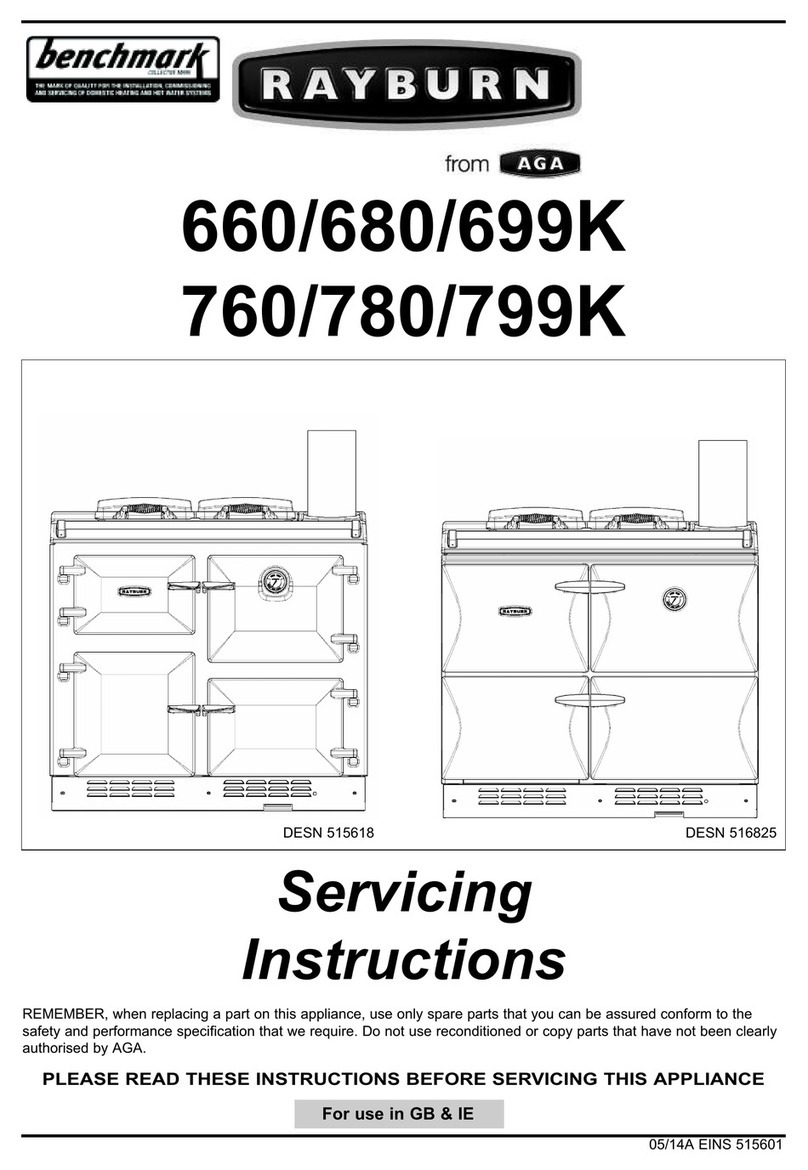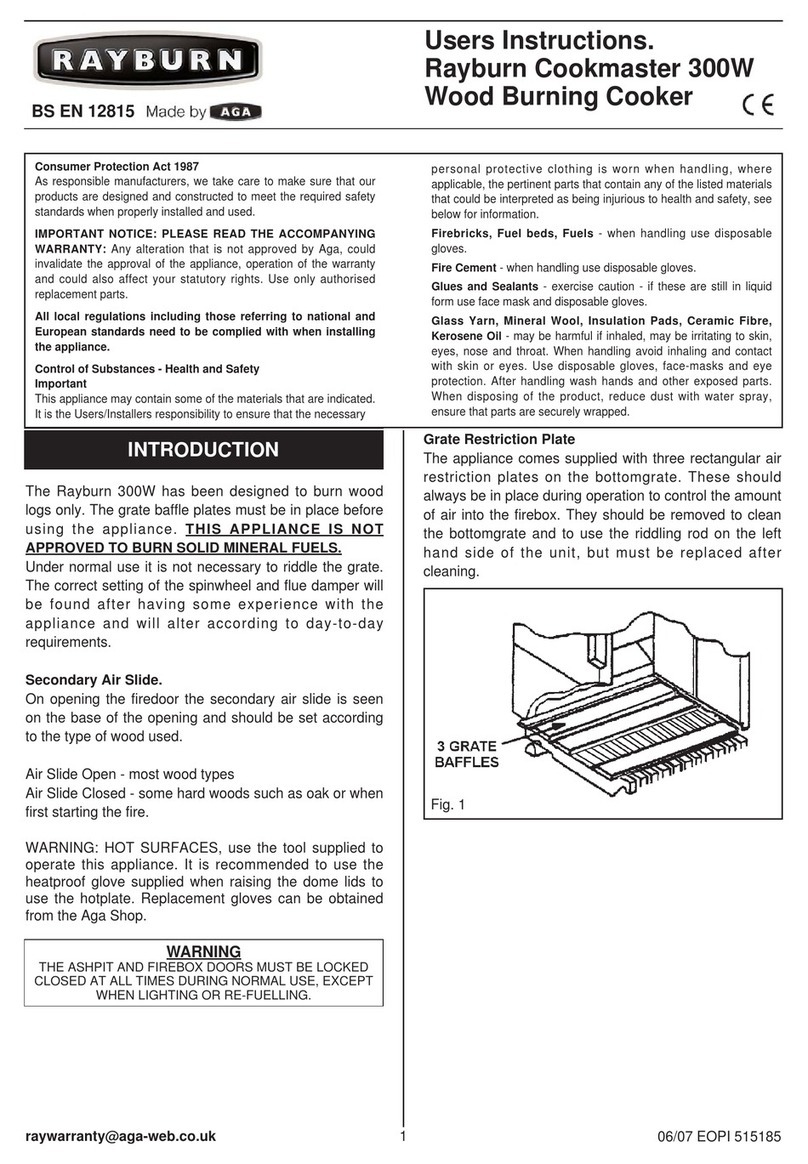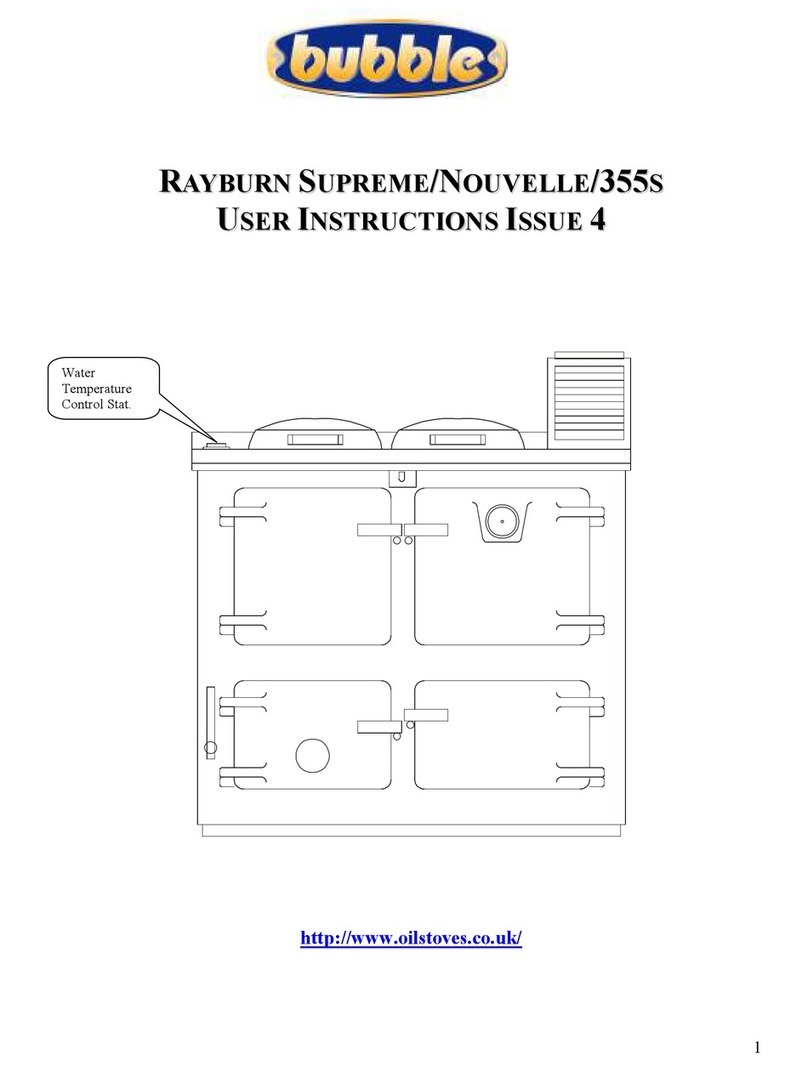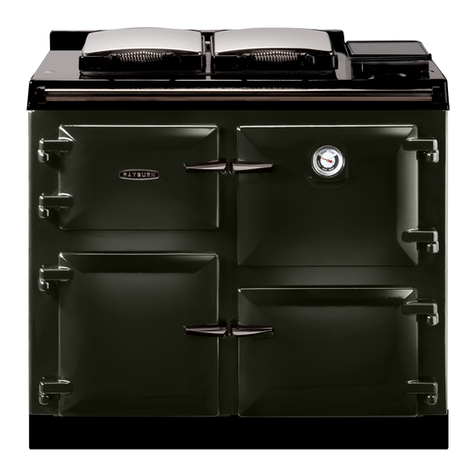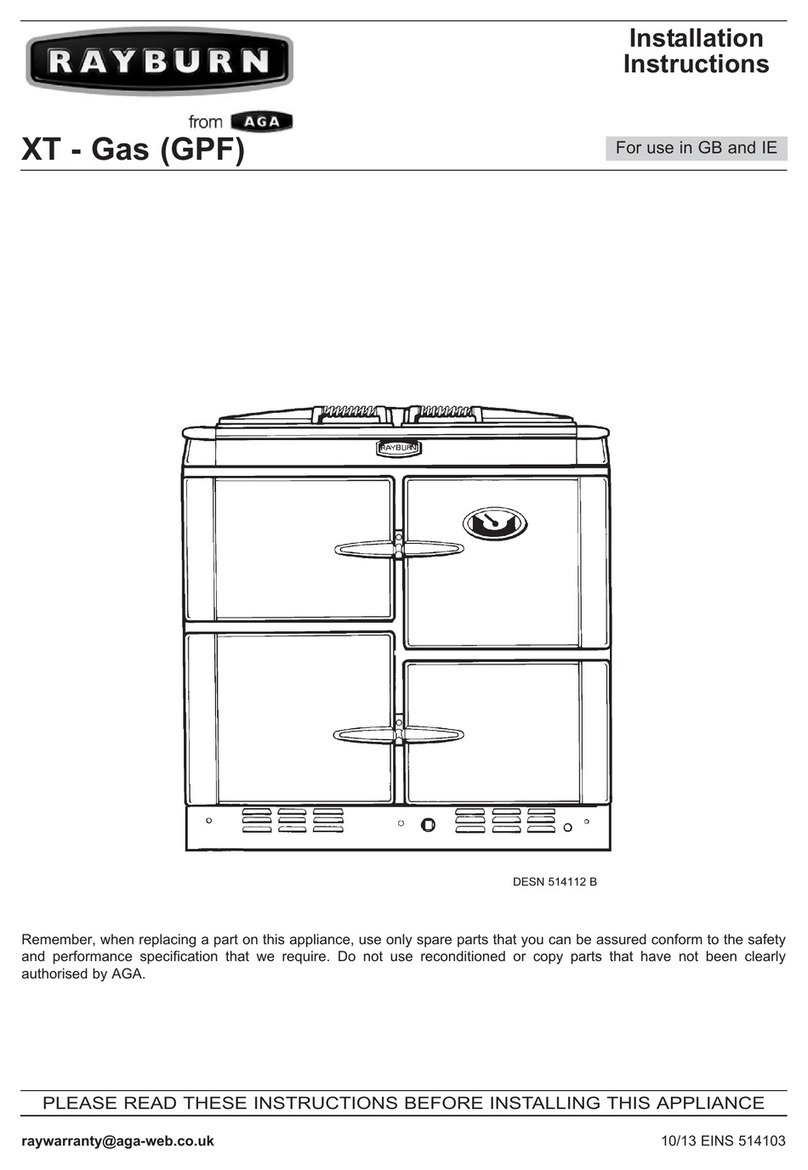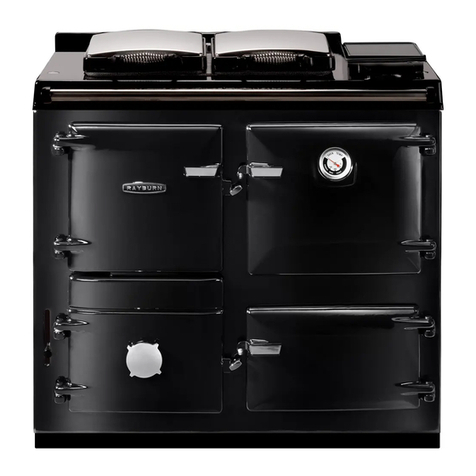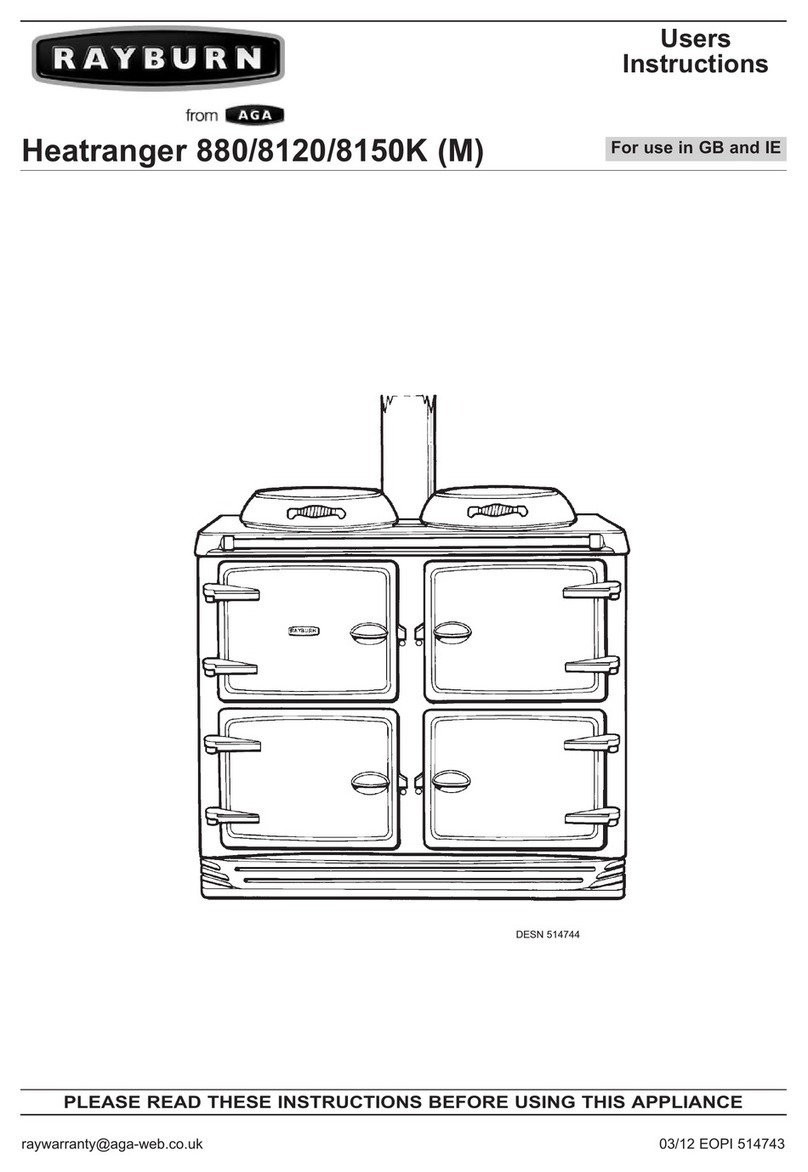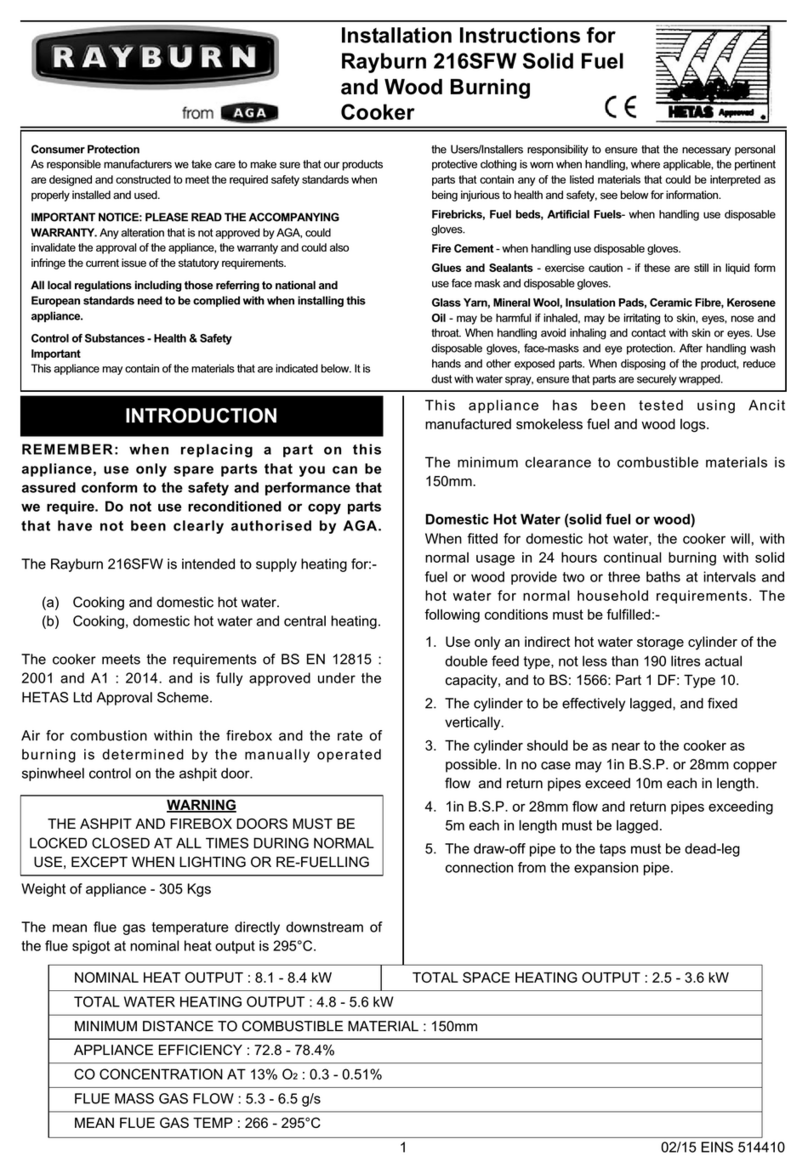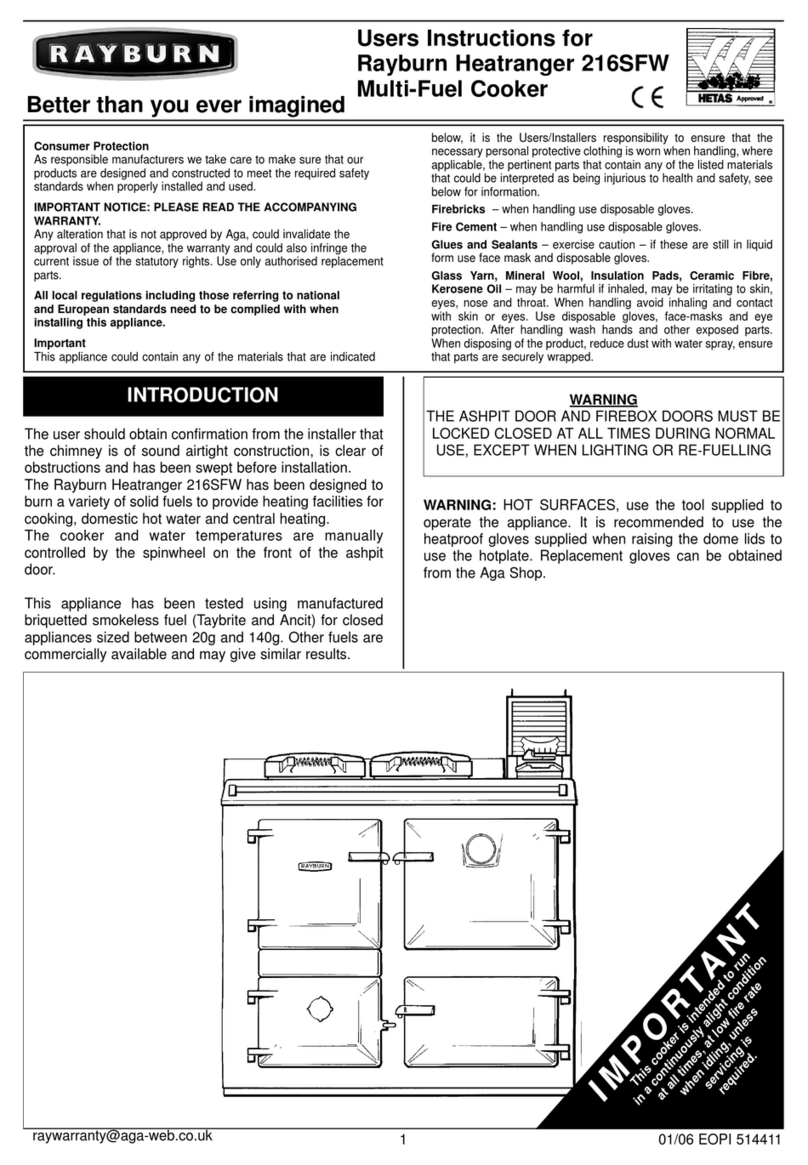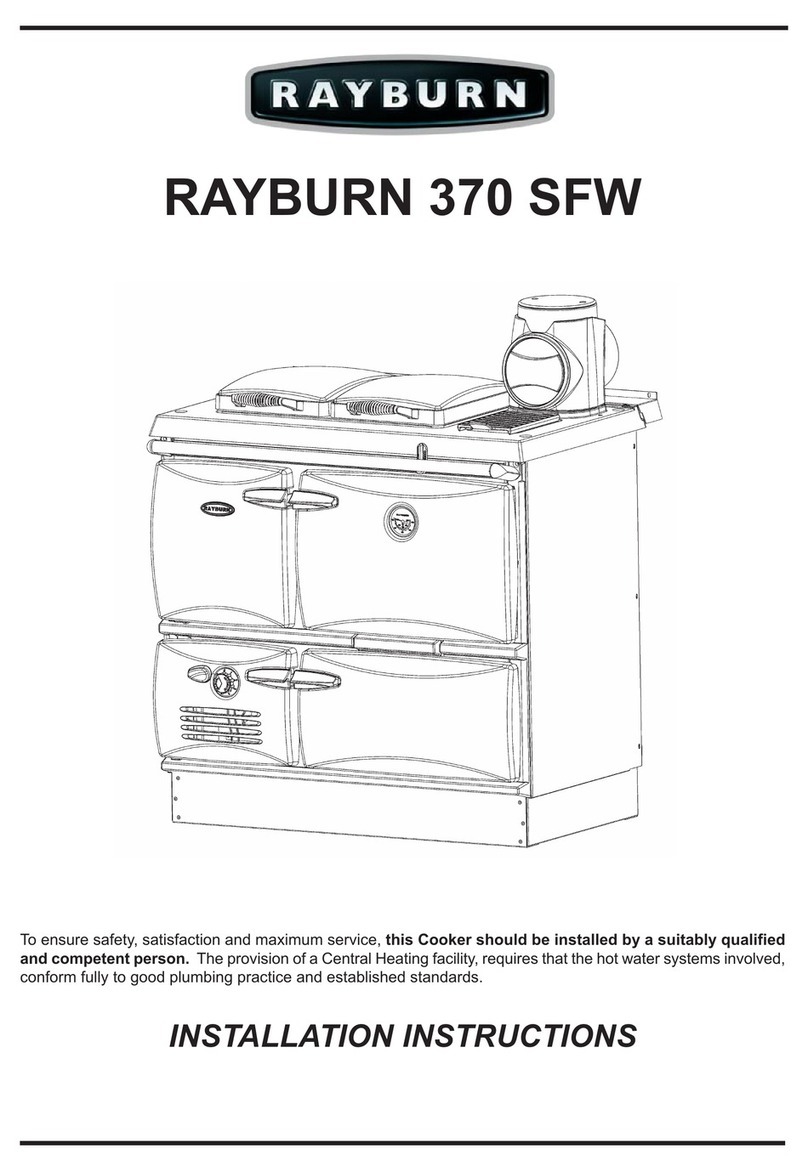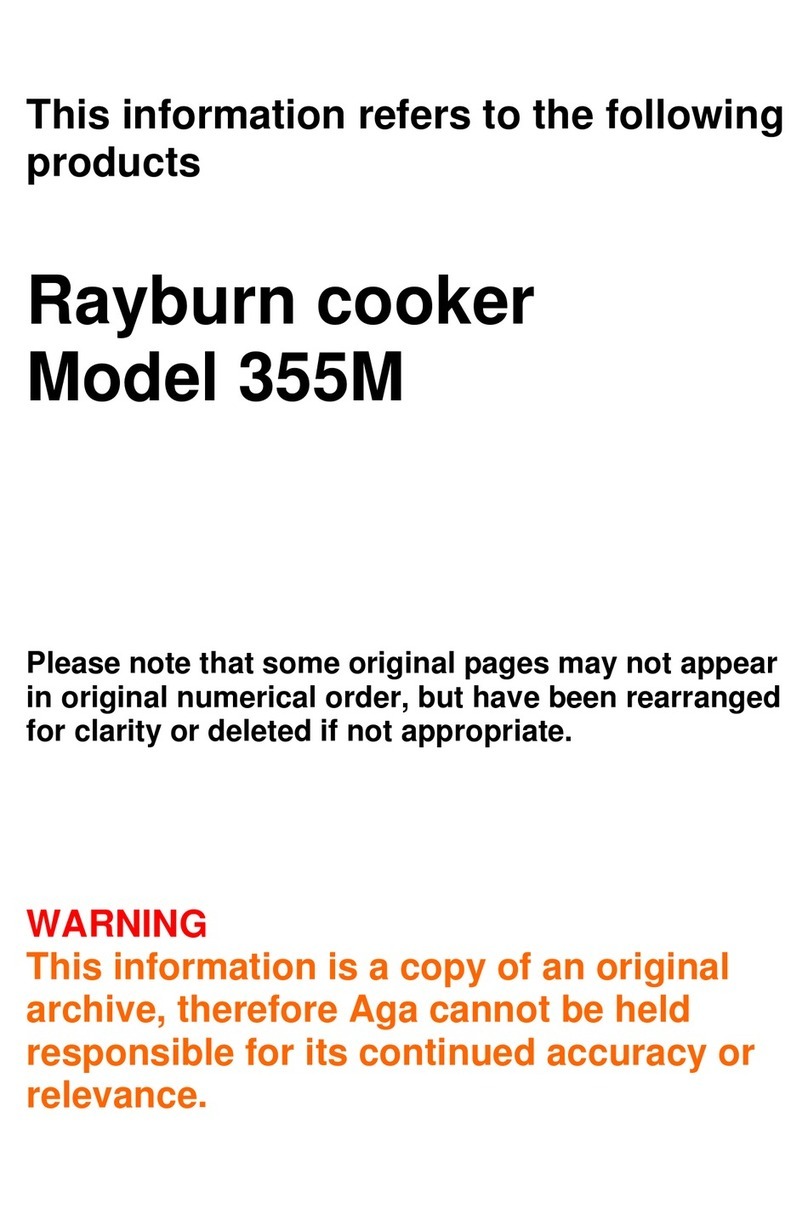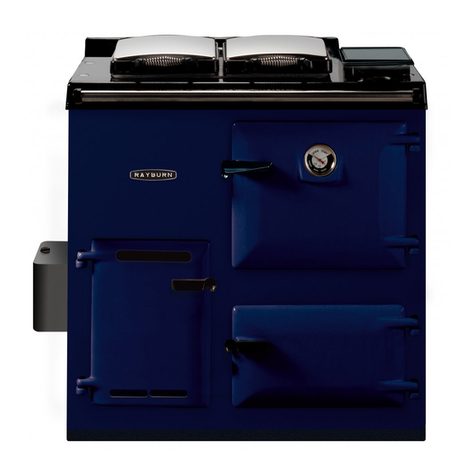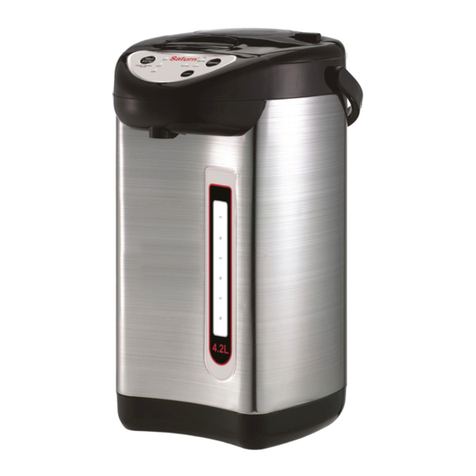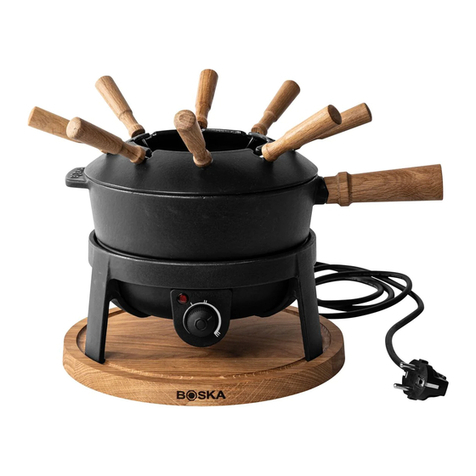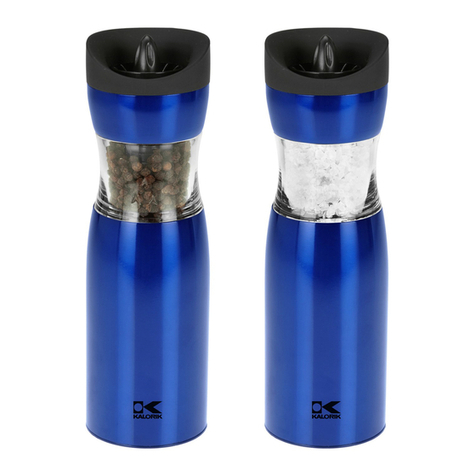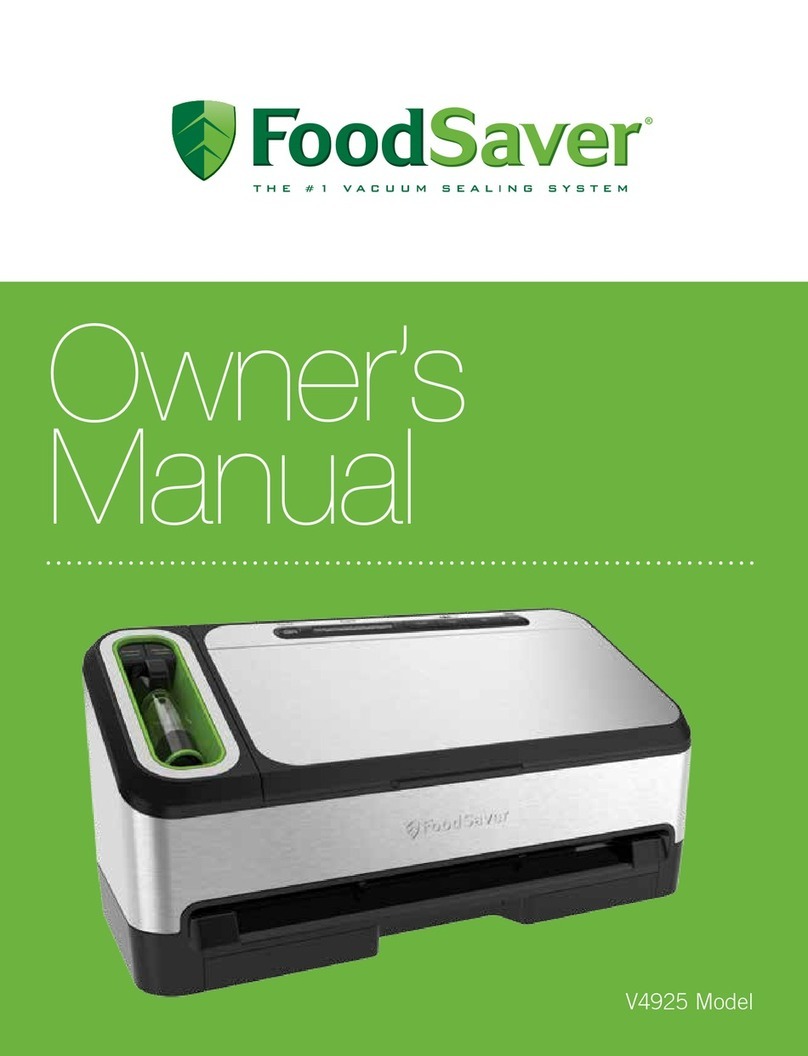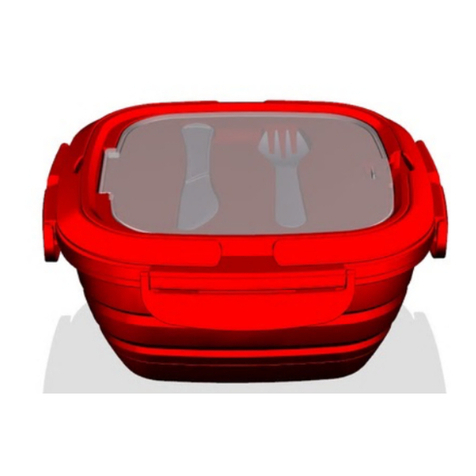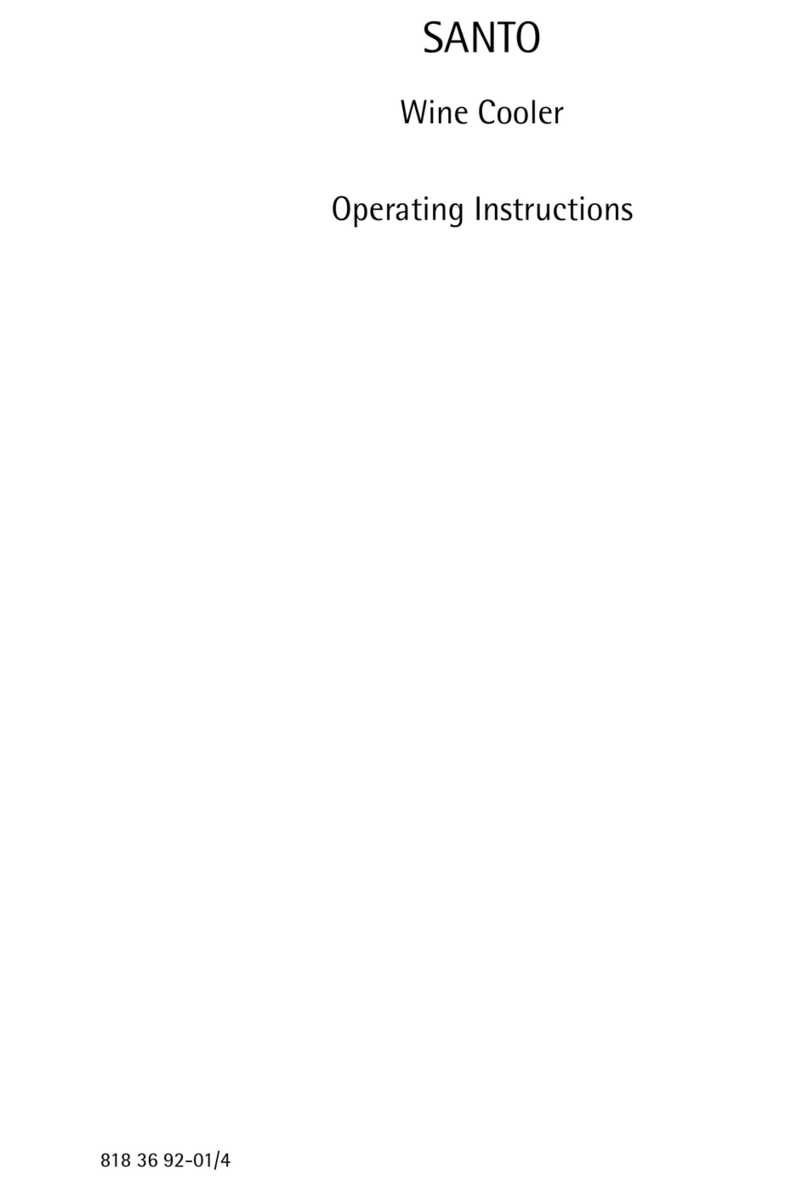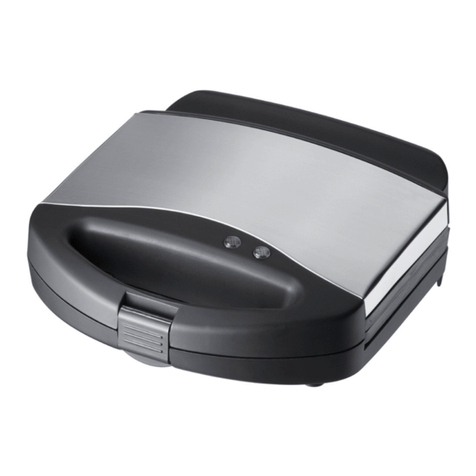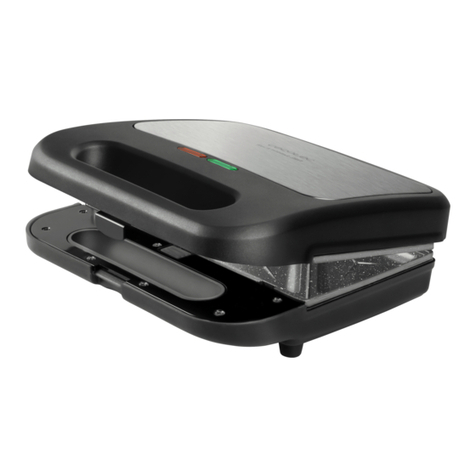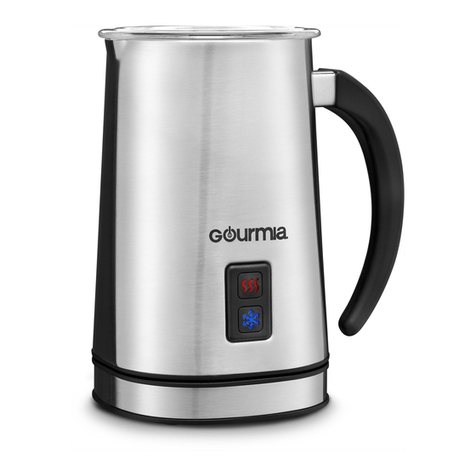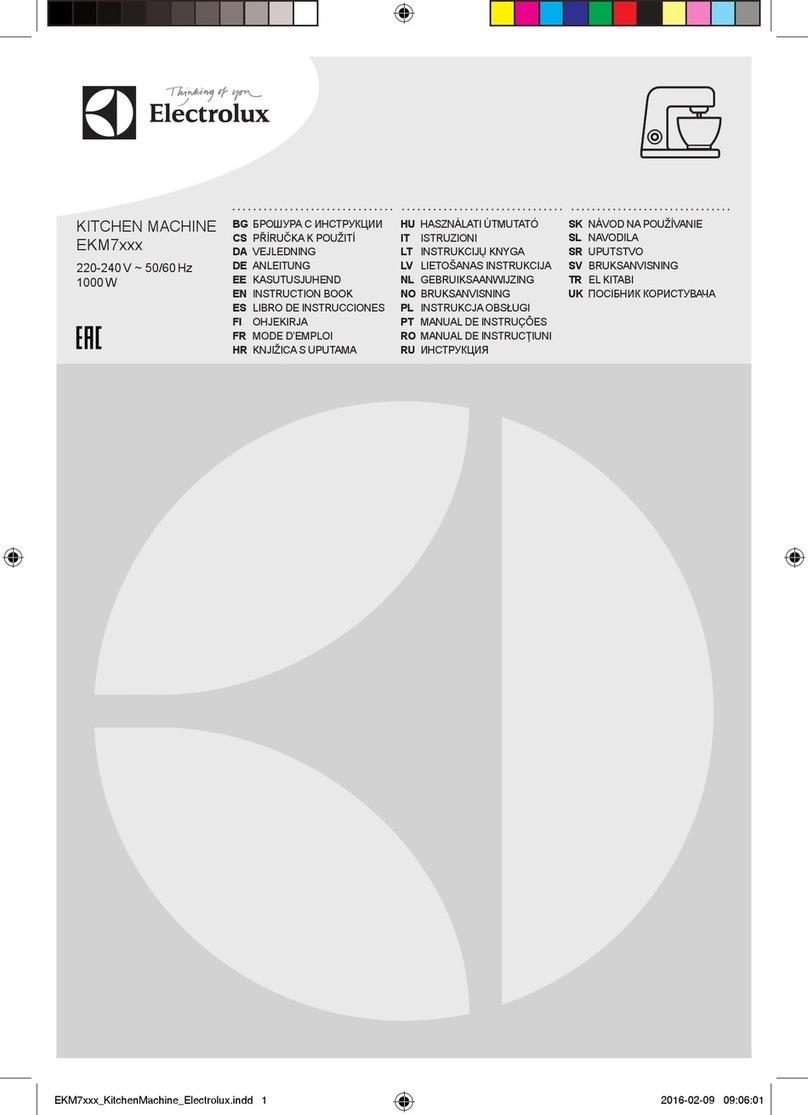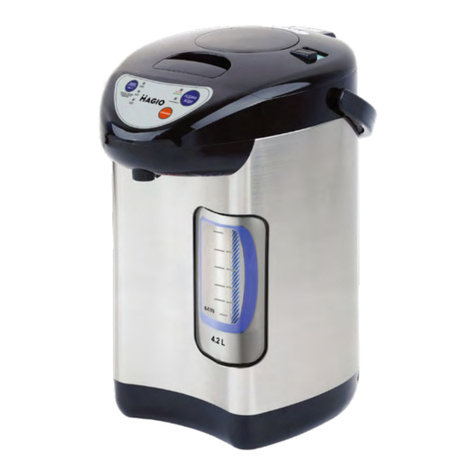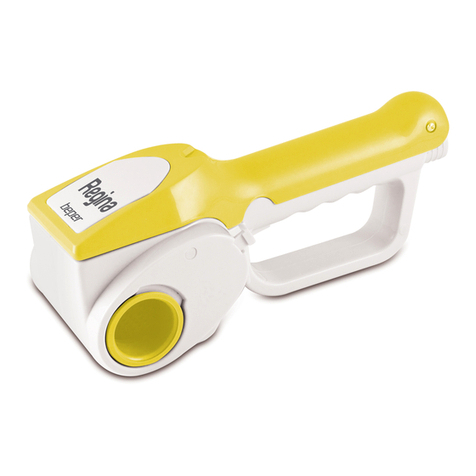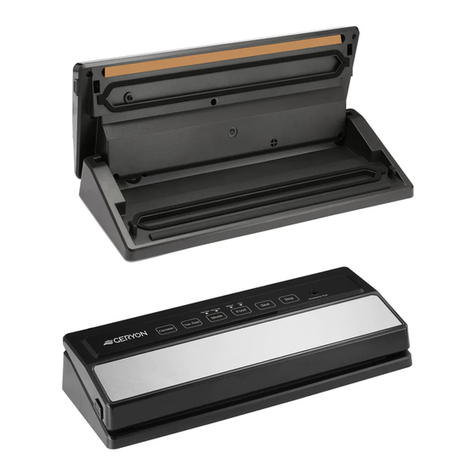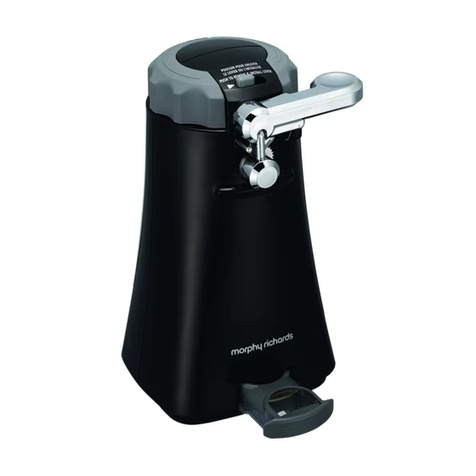Set the cooker/boiler damper knob ‘H’.
Close spinwheel.
To regulate burning, set the boiler thermostat knob to ‘8’
(high) or minimum rate ‘1’ (low).
Adjust as required to suit desired water heating.
Overnight banking and daytime slow burning should be
obtained with the boiler thermostat knob set at ‘1’ to give
extended burning. This maybe higher and will be dictated
by personal choice.
Some woods are more difficult to burn therefore it may
be necessary to open the spinwheel in addition to the
thermostat to obtain the desired results. The spinwheel
must be closed as appropriate. Do not leave the cooker
for extended periods with the spinwheel open as the
cooker may overheat and cause damage.
In some circumstances, it may be possible to overheat
the appliance and the water inside will boil. This will be
evident by the sound of a knocking noise coming from
the appliance and pipes around the house. If this occurs,
close off all air controls and manually start the central
heating pump if fitted. Opening the oven doors and
hotplate covers will help to release heat from the
appliance. Be aware that steam and boiling water will be
expended from any open vent from the heating system
probably in the roof space at the expansion tank.
In the unlikely event that the appliance is not operating in
freezing conditions, the water must be drained from the
boiler to prevent frost damage.
Wood
The appliance is designed for continuous slumbering
overnight for up to a maximum of 10 hours depending on
the type of dry wood being used. Last thing at night,
close the flue chamber damper. De-ash the fire, empty
the ashpan and fully refuel. It may be necessary to open
the flue chamber door.
Ensure that the firebox and ashpit door are securely
closed, close the spinwheel tight and the flue chamber
damper is set to No. 1.
Set the boiler thermostat knob to its minimum setting and
front damper knob to ‘c’.
Turn the flue dilution lever (See Fig. 7) from left to right
hand so that the flue chamber door opens at the bottom
and minimise burning rates.
NOTE: THE PRECISE AMOUNT OF OPENING
DEPENDS ON THE CHIMNEY DRAUGHT AND THE
TYPE/CONDITION OF WOOD TO BE BURNT. THIS
MAY TAKE 2 OR 3 DAYS TO ASCERTAIN.
1. If the fuel in the firebox is exhausted prematurely, the
overnight chimney draught must be reduced by
increasing the opening setting of the flue chamber
door, using the flue dilution lever.
2. If the fuel does not burn but ‘dies out’, the draught
should be increased by reducing the opening setting
of the flue chamber door, using the flue dilution lever.
Following overnight banking, the flue chamber door must
be closed, the spinwheel and flue chamber damper
opened and the fire refuelled.
Immediately the new fuel has caught alight, riddle the fire
and close the flue chamber damper to halfway.
NOTE: BUILD-UP OF CREOSOTE DEPOSITS IN THE
FLUE AND CHIMNEY CAN IN TIME, LEAD TO A
CHIMNEY FIRE.
THESE DEPOSITS CAN BE PREVENTED BY THE
REGULAR USE OF A PROPRIETARY BRAND OF
CHEMICAL CREOSOTE REMOVER, WHICH
REDUCES THE ADHESION STRENGTH OF THE
CREOSOTE DEPOSITS.
IMPORTANT: CHEMICAL CLEANERS MUST NOT BE
CONSIDERED AS AN ALTERNATIVE TO CHIMNEY
SWEEPING, ONLY AS SUPPLEMENTARY.
Against Thermostat knob settings with Cooker/Boiler
Damper at ‘H’ and Spinwheel closed.
Thermostat Setting No. Water Temperature
(APPROXIMATE)
1 46°C (115°F)
3 54.5°C (130°F)
5 65.5°C (150°F)
8 80°C (176°F)
a) Using the cooker boiler to provide heat for domestic
hot water and radiators in the winter, a boiler thermostat
setting at No. 8 is recommended.
b) Using the cooker boiler for the provision of domestic
hot water only, in the summer, a boiler thermostat setting
of No. 5 is recommended.
NOTE: TO CONSERVE FUEL, ENSURE THE HOT
WATER CYLINDER AND PIPES ARE LAGGED WITH
INSULATION.
A correctly fuelled fire will last about 1.5 hours burning
wood when maintaining the maximum rated output of the
boiler with intermittent cooking periods included.
A deep bed of newly charged fuel on a low fire will
take time before heat reaches the ovens, hotplate
and boiler.
ONCE RE-FUELLING HAS BEEN COMPLETED,
CLOSE THE FIREBOX DOOR IMMEDIATELY AND
OPEN ONLY FOR RE-FUELLING CHARGES.
BOILER CENTRAL HEATING
THERMOSTAT SETTING
TYPICAL WATER TEMPERATURES
REFUELLING
5
OVERNIGHT BANKING
